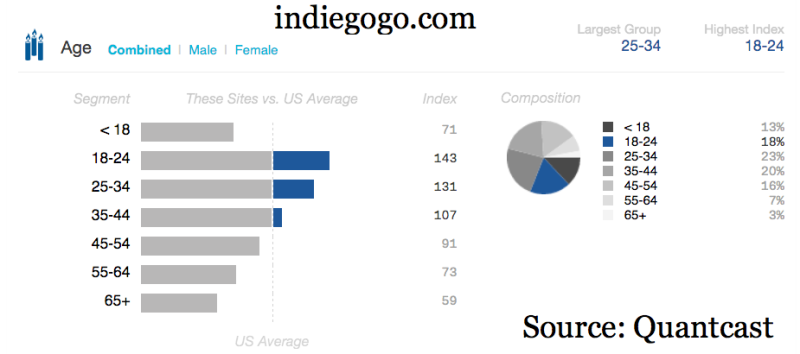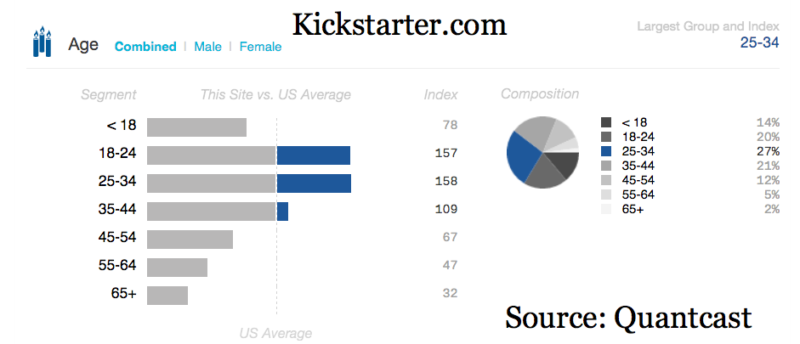The Enmeshing Of Marketing & Product Development: Dispatch From SXSWi
Agency and brand experts at SXSWi explored the opportunities for marketers and product developers to work together from the conception of an idea to the finished product.

There’s no doubt that marketing is crossing over into a variety of other business functions — customer service, sales, human resources, etc. It’s happening in part because of the vast amount of data now accessible to the digital marketer, and also because social media facilitates interactions with customers and prospective employees.
One of the most important intersections, however, is that of marketing and product development — because it can influence the product itself, which, in turn, shapes the business fundamentally.
This collision of marketing and product development was explored in two consecutive panels at SXSW Interactive last week. In this article, I’ll share the highlights. But first, our panels and panelists:
Culture Clash: When Marketing And Product Converge
- Tyler Bahl, Brand Marketing Lead, Google
- Ann Herrick, Mktg Dir Gift Solutions, Innovation & Corporate Initiatives at Hallmark
- Nathan Martin, CEO, Deeplocal
- Nick Parish, Editorial Director, Americas, Contagious (moderator)
Pitch Event: Storytelling For Crowdfunding Ideas
- Alisa Cordesius, Head of Social Innovation, Indiegogo
- Jeff Kling, Chief Creative Officer, Fallon
- Dean Phillips, Chairman, Talenti Gelato
- Marty Wetherall, Director of Innovation, Fallon
All of the experts in these sessions discussed the relationship between product development and marketing. The first group, however, talked largely about how marketing could influence product development, while the second looked at products — pitched by inventors to the panel and the audience — and assessed their suitability for a crowdfunding-oriented marketing approach.
A Special Moment Filled With Opportunity
To set the stage, Nathan Martin of Deeplocal explained why he thought we were living at a very special moment in history, where people are able to make prototypes of products — either software products or real-world products — much more quickly, inexpensively and easily than ever before. And it’s not just about software and 3D printing.
“We are now more easily connected to production factories around the world as well as the prototyping fabrication tools you more often hear about,” Martin told me after the panel. “Products can launch much more quickly now than even three years ago. Also, socially, tools like Kickstarter allow would-be inventors to test the waters. It’s not a perfect system by any means, but it is a start, and there will be a better one a few years from now, I’m sure.”
This lets marketers play in a world they’d usually be excluded from. It’s very different than the typical scenario where marketers would be presented with the product — after it was developed and likely already being manufactured — and be told “go market it.”
Though often characterized as a boutique advertising agency, Deeplocal, which works with both Google and Hallmark, exists somewhere on the continuum between an agency and an engineering firm. Its employees are engineers trained in everything from software engineering to aerospace engineering, but they can also speak the language of marketing.
What marketers bring to the table is their expertise in understanding the customer — and reams of data collected through website and social media interactions, as well as traditional market research. The benefit of being involved in product development, from the marketer’s point of view, is that something can be designed to be marketable from the get-go.
As an example, Nick Parish told the story of what occurred at BGH, a company that makes microwaves for the Argentinian market. Marketers at BGH, stymied by the idea of differentiating an unremarkable microwave in the marketplace, were able to make some feature requests. They asked that the microwave be equipped with a USB port and some speakers, so users could choose a song to play when the food was ready.
According to Saatchi & Saatchi, the limited edition run of these BGH Quick Chef microwaves was sold out in a week, and the product was later put into wider production.
Getting A Seat At The Table
Not that it’s easy to get that seat at the table to make those requests. Ann Herrick of Hallmark described how marketers at her company are, as of last year, involved in product development every step of the way, but noted that the marketers had to work hard to gain the trust of the product team. That trust can be gained, the panelists said, by speaking the language of products and proving you can provide value.
“The way that we find it works is that it’s really about a mindset,” said Herrick. “What we say to our marketing people is that ultimately you have to kind of be curious, and you have to bring value. and you have to get these product teams, these engineers, to actually see the value that you can bring.”
Tyler Bahl from Google noted that part of his success comes from the fact that he’s “embedded” with the engineers, sitting near them on a day to day basis. He has lunch with them, hears their conversations and can understand their concerns — that allows him to present his ideas in a way that makes sense to them.
One of the fruits of that relationship, and Google’s relationship with Deeplocal, was a technological set-up that allowed a young baseball-obsessed boy, who was undergoing treatment for aplastic anemia, to virtually throw out the first pitch in a professional baseball game taking place across the country. The effort was aimed at raising awareness of Google Fiber, and how high-speed internet access can change lives.
While many of the “products” discussed and created so far have been primarily valuable for the public relations and press interest they generated, the panelists agreed that eventually, they believe marketing should be impacting items that actually go to production and distribution.
“It’s more than the stunt. It’s more than the prototype, it’s really about finishing if you’re going to truly compete,” said Nathan Martin of Deeplocal.
Parish agreed. “I think we all know, as people who are in an idea-based business that’s about making stuff, that it feels much more challenging to be able to do the stuff that’s out in the world, finished, and people are using. It’s got some sort of robust infrastructure, it’s got scale behind it, etc.”
Crowdfunding As The Ultimate Product/Marketing Collaboration
The second panel took the form of a pitch session in which representatives of five different companies pitched their products to the experts, hoping to win Fallon’s help to launch a crowdfunding effort to raise money and grow their company. Fallon has recently launched what it calls a “Starter Kit,” a package of that includes strategy, video production, page content, PR, and community management. In exchange, the burgeoning companies give Fallon an ownership stake or a percentage of the money raised.
“We identify the crowdfunding projects that need the type of work that we do. And in a way it’s become our own version of an incubator where we invest our creative services into products that we believe in, at a time they are needed most,” said Marty Wetherall, Fallon’s director of innovation. “With crowdfunding, that’s at the very beginning of the project. So we’re there from the birth of the brand to help at that very important stage.”
With crowdfunding, the product doesn’t even get made, in many cases, without successful marketing — the marketing comes first. Wetherall pointed out that two of the most successful crowdfunding campaigns of all time — for the Pebble Time smart watch and the Flow Hive Beehive — are currently in progress.
The Pebble Time campaign is a second outing for Pebble, which originally launched through a Kickstarter in 2012. This time, it sought to raise $500,000 and has raised nearly $19 million with nine days left to go in the campaign. The Flow Hive, which is using the Indiegogo platform, set a goal of just $70,000. So far, it’s raised $6.4 million and 18 days remain before the campaign closes.
The companies pitching at SXSW Interactive included a solar energy startup (Plug Solar), a socially conscious jewelry and fashion products company (Priya), a company making innovative waterproof pants (Rainier Apparel), a food technology firm (Umai Dry) and a sporting goods product (Impact Wrap).
Tapping Into Trends And Social Consciousness
Through their pitches and the panelists’ questions, one could see a picture emerge of the ideal company for a crowdfunding campaign. Products with a social conscience — such as Plug Solar or Priya — seem to perform well in crowdfunding situations, as they give backers the feeling of making an impact on the world. The Flow Hive has likely benefited from this phenomenon, as colony collapse disorder has brought awareness of bees’ importance to the environment.
Both Impact Wrap and Umai Dry tap into other social trends that might help them pop via crowdfunding. Impact Wrap fits into the “quantified self” impulse that has seen fitness trackers gain such success. Umai Dry ties into both the hunger for gourmet foods and the DIY/Maker phenomenon. Rainier fits the mold of a technology — the waterproof cloth that looks and feels just like cotton — that integrates seamlessly into everyday life.
Beyond tapping into social trends, successful crowdsourcing projects must have a compelling story. In the Flow Hive example, the video accompanying the campaign tells the story of how a father and son in Australia came up with the concept of this revolutionary bee hive. Then, the founders explain how they introduced respected beekeepers and scientists to their technology — and the video shows these experts raving about the product.
Of the products pitched for the panel, Priya had an especially interesting story, as the jewelry and other products are made by artisan women in third-world countries, giving these women the opportunity to be financially independent and escape oppression.
The founder of Impact Wrap told a relatable (if unoriginal) tale, too. He was a boxing and mixed martial arts aficionado who looked for a product like Impact Wrap — and finally developed it himself when he found nothing similar on the market.
Making A Big Impact
What likely set the eventual winner — Plug Solar — apart from the others is that it aimed to tackle a big problem and make a giant impact.
Crowdsourcing seems to make the most sense when there’s a large audience of possible customers and appealing to younger customers is also desirable — Quantcast figures show that both sites’ audiences are most popular among 25- to 34-year-olds, and indiegogo is especially successful at drawing 18- to 24-year-olds.


“Personally, I like disruption, and broad-based disruption,” Jeff Kling, chief creative officer at Fallon, told the audience. “A few of the concepts presented today are extraordinary but in very targeted consumer categories…. What intrigues me is something that might encourage the country to move to solar energy. I find that intriguing and a great possibility.”
Fallon will create a crowdfunding “starter kit” campaign for Plug Solar, but it also promised to help the other companies that pitched, saying that they saw promise in all of them.
MarTech is owned by Semrush. We remain committed to providing high-quality coverage of marketing topics. Unless otherwise noted, this page’s content was written by either an employee or a paid contractor of Semrush Inc.
Related stories